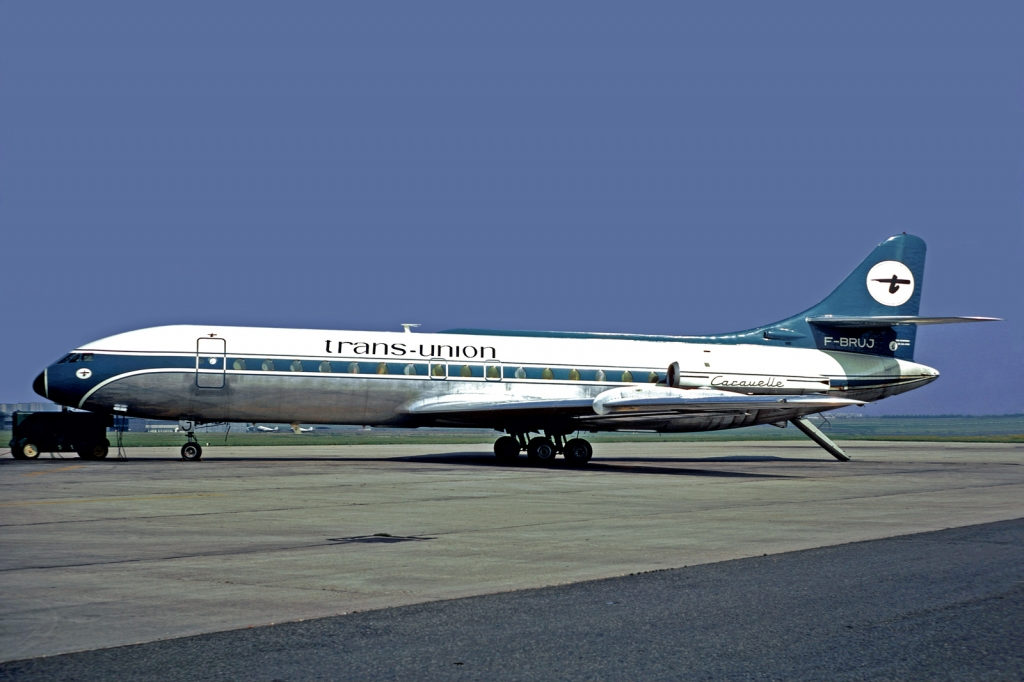Leeham News and Analysis
There's more to real news than a news release.
Bjorn’s Corner: Interesting aircraft at the sides of Paris Air Show 2017
June 22, 2017. ©. Leeham Co: When visiting the Paris Air Show this week, we strolled several times into the Aeronautical museum which is placed at the Le Bourget airfield. It has a fine collection of historical aircraft, helicopters, missiles and space rockets/capsules.
One of the most interesting eras in French aeronautical history, captured in the museum, is the period directly after the second World War. The French industry, destroyed by the war, started its way back. Part of the way was to learn about jet propulsion for military and civil aircraft and how to design a practical supersonic fighter aircraft for the French Air Force.
From a multitude of experiments with different aircraft types and propulsion systems, came finally the successful Dassault Mirage jets, the Caravelle jet airliner and the only Supersonic passenger jet, the Concorde. Here a video and some pictures from these exhibitions.
Video
An aircraft that did not make it to the video was the first aircraft that was named Dassault, the Dassault Flamant MD 312. Marcel Bloch had changed his name after the war to the alias that his brother carried in the French resistance.
His aircraft factory then change the name to Dassault and the Flamant was his first design under that name. It was an eight seat communications aircraft for the French Air Force.
There are Concordes on display, captured in the video, but no SNIAS Caravelle displayed at Le Bourget. Civil transport aircraft (Caravelle, Airbus A300….) are to be see at the Toulouse Aeroscopia Museum.






The Nord 1500 Griffon (2:25 in your video) looks like it may have inspired the modern 3rd/4th gen Dassault Rafale. Interesting display. The French always made the coolest planes imo. Still do!
No mention of the Dassault Mercure ?
Hi dukeofurl,
there is no trace of the Dassault Mercure on this museum or the other I have visited, Aeroscopia in Toulouse. Anyone knows where there is one?
Theres supposed to be 7 still remaining, most in museums says Wikipedia
“F-BTTD, c/n 4 is on display at the Musée de l’air et de l’espace at Paris–Le Bourget Airport in France”
Actually F-BTTD is still parked in the museum reserve (as well as many others), which is loacted on the other side of Le Bourget Airport and only opened to public once or twice a year.
Another Mercure is in a Maintenance school in Bordeaux.
Mercure was equiped with windows without shutter and could be dimed as B787 !!!
Are you sure on that ? It seems to predate the underlying technologies with thin film flat panels
I am old enough and flew on That aircraft
Diming was obtainéd using polarisation of 2 glass panel
One of them could be rotated by traveller himself
Sorry my english not too good so explanation bad
Great stuff Bjorn. What a time to be designing aircraft the 1950s must have been. What’s gone wrong?
A lot would have been terrible. Airworthiness regulations were very lax, eg Lockheed Electra, Handley page Hastings.
The US Coastguard used to station a ship between West coast and Hawaii to be ready for any ditching ! Autocratic airline bosses ruled the roost and decent planes were overlooked eg turboprop Constellation first flew in 1954, but no airline was interested?
An interesting French research type was the Hurel Dubois HD-31 of 1953 with an extra ordinary high aspect ratio wing for the time, wingspan was just less than a B767.
Hi Grubbie,
What’s gone wrong?
Most of those projects were just rendered obsolete by the progress of air and space technologies and weapons systems (for military ones).
At that time, France was technologically well behind US and many French manufacturers tried to find their own way by developing in house concept with more or less luck.
In the end, only Dassault made its way in business jet and military business thanks its ability of anticipating the needs and designing top-notch aircraft.
On commercial aviation side, all the surviving manufactures finally merged into Aérospatial, then part of Airbus.
Plus US military development money in the early 50s. Dassault was helped by being Israels favoured supplier around that time and even after DeGaulles embargo!
During the late 50s and early 60s everyone had a small jet trainer/business jet and Dassault was lucky enough to have theirs marketed in the US as the Falcon and it sold like hot cakes.
There must be a story of how the Mercure came from their design studios rather than Sud Aviation , producer of the innovative Caravelle ( with significant British assistance and co- developer of tConcorde
I have to agree with the above.
I know of two British aircraft that disappeared between UK and S. American that they never found (shades of MH370 though in those days it was you buys your tickets and you takes your chances)
We had one complete disappeared between US and Hawaii , subsequent they thought a run a way prop and we had one ditch off our Island when I was a kid because of the guidance (if your prop runs away, engine will separate, find someplace to land, even if its ocean and put it down!)
In a way it was the wild west of Aircraft period where cost were low and the low hanging performance fruit was to be had.
Now they know what it costs to actually make it a functional aircraft.
NASA is going back to X aircraft which I always applauded (and they should be separated out from Space as it mucks up the aviation side to be over shadowed by the space side.
You can’t have excitement without a little danger